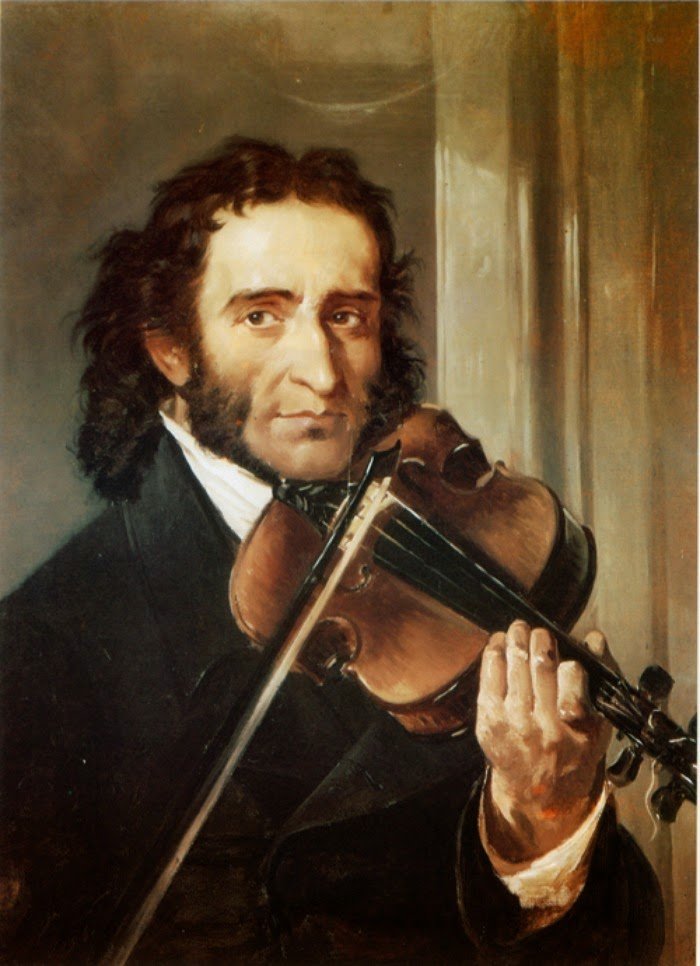Deals With The Devil
The concept of musicians "selling their soul to the devil" is often rooted in folklore, legends, and myths rather than historical facts. It's important to note that these stories are often sensationalized or exaggerated accounts rather than verified occurrences. Some famous musicians have been associated with this idea due to their exceptional talents or the mysterious circumstances of their success, but these claims should be taken with a grain of skepticism.
Here are two of my favorite examples:
Robert Johnson (1911–1938) was an American blues musician who, despite a relatively short life and limited recorded output, has had an enormous influence on the world of music. He is often considered one of the most important figures in the history of blues and rock 'n' roll.
One of the most famous myths associated with Robert Johnson is the story of him selling his soul to the devil at a crossroads in exchange for exceptional guitar skills. The story goes that Johnson met the devil at a crossroads at midnight and made the deal. While there is no concrete evidence to support this legend, it has contributed to Johnson's enigmatic persona.
Robert Leroy Johnson was born on May 8, 1911, in Hazlehurst, Mississippi. He grew up in poverty and faced challenges early in life. He was orphaned at a young age and spent much of his childhood living with various relatives. Johnson had a strong interest in music from an early age. He started by playing harmonica and jaw harp, but he was particularly drawn to the guitar. He began learning to play by watching and listening to other local musicians.
Robert Johnson's guitar skills set him apart from other musicians of his time. He developed a distinctive fingerpicking style that incorporated intricate picking patterns, slide guitar techniques, and complex chord progressions. His playing was characterized by its speed, precision, and emotional depth. Johnson's recording career was short, spanning just a couple of years between 1936 and 1937. He recorded a total of 29 songs for the American Record Corporation (ARC), which were released on a handful of 78 RPM records. These recordings include some of his most famous songs, such as "Cross Road Blues," "Love in Vain," and "Sweet Home Chicago." Despite the limited number of recordings he left behind, Robert Johnson's impact on music has been profound. His unique guitar style and emotional vocal delivery had a lasting influence on blues and rock musicians that followed, including Eric Clapton, Keith Richards, and Jimi Hendrix. His songs have been covered by countless artists and remain staples of the blues genre.
Robert Johnson's life was tragically cut short. He died on August 16, 1938, at the age of 27, under mysterious circumstances. The exact cause of his death is not definitively known; theories range from poisoning to complications related to syphilis. Johnson's legacy continued to grow after his death, and his music gained a wider audience during the blues revival of the 1960s.
Robert Johnson's contributions to music, his unique guitar techniques, and the myths surrounding his life have solidified his place in music history. He is often mentioned alongside other iconic figures like Charley Patton and Son House as a foundational figure in the development of the blues and rock 'n' roll genres.
There is also a Netflix documentary addressing the legacy of Robert Johnson.
Niccolò Paganini (1782–1840) was an Italian composer, violinist, who is often regarded as one of the most influential and celebrated virtuosos in the history of music. His exceptional technical skills on the violin and his innovative playing techniques left a lasting impact on the world of music.
Paganini was born on October 27, 1782, in Genoa, Italy. He showed an early aptitude for music, particularly the violin. He began his formal musical education with his father, who was a mandolinist and guitarist. Paganini's talents were recognized at a young age, and he received training from various teachers.
Paganini's most significant contribution to music was his remarkable virtuosity on the violin. He developed a unique and distinctive playing style that showcased his technical prowess. His performances were known for their speed, agility, and the use of extended techniques such as harmonics, left-hand pizzicato, and double stops. Paganini's playing techniques were considered revolutionary for his time. He often used left-hand pizzicato (plucking the strings with the left hand while continuing to bow with the right) to create rapid and intricate passages. His use of harmonics produced ethereal and shimmering sounds. These techniques greatly expanded the expressive possibilities of the violin.
Paganini composed a variety of works for violin, both solo pieces and concertos. His compositions were often tailored to his own virtuosic abilities, allowing him to showcase his extraordinary skills during performances. Some of his most famous works include the 24 Caprices for Solo Violin, which remain popular among violinists today. Paganini's dark and enigmatic stage presence contributed to his mystique. His tall, gaunt appearance, along with his unconventional habits and rumored health problems, fueled rumors and legends about his supernatural abilities and possible dealings with the devil. These stories, while exaggerated, added to his allure as a performer.
Paganini's impact on the world of music extended beyond his lifetime. His innovative techniques and compositions influenced generations of violinists and composers. His approach to virtuosity paved the way for future violinists to push the boundaries of technical proficiency. Paganini's legacy lives on in the world of classical music. His compositions are still performed and studied by violinists today. His influence on the development of violin technique and his contributions to the Romantic era of music are widely acknowledged.
Niccolò Paganini's life and career are marked by a blend of exceptional musical talent, technical innovation, and the mystique surrounding his persona. While the legends of his "deal with the devil" are more myth than reality, his impact on the world of music remains undeniable.
Check out this video for more Deals with the Devil!
A Blog by Christopher Grehan
Clovermind Music LLC.




